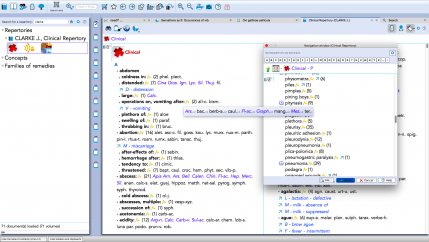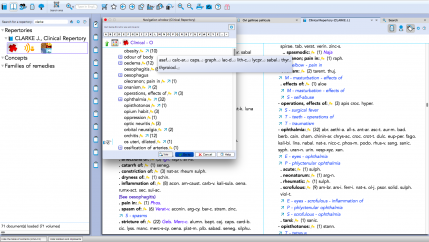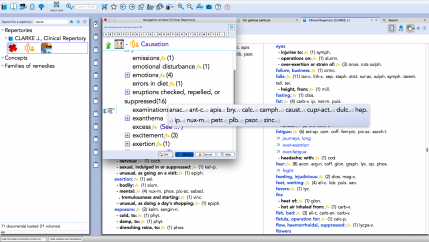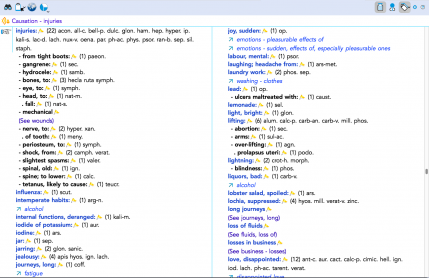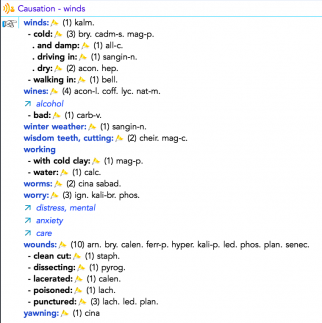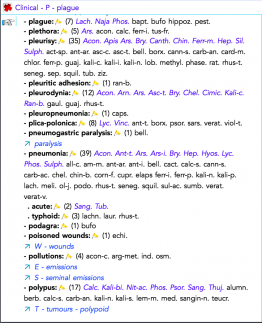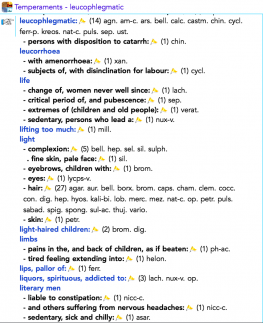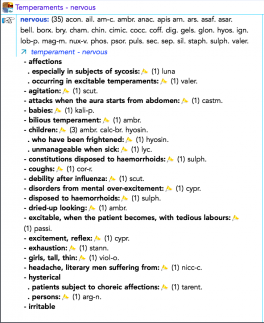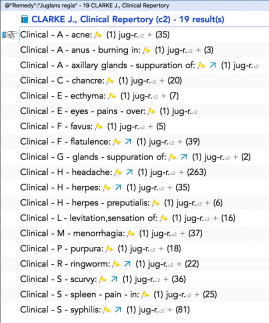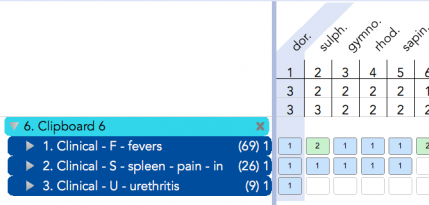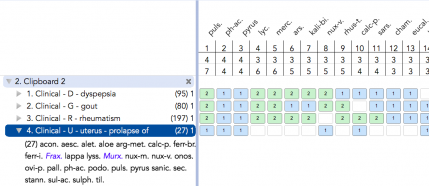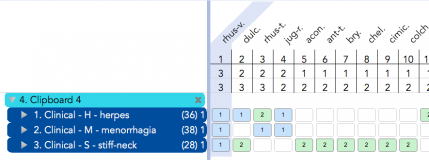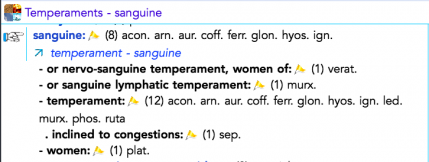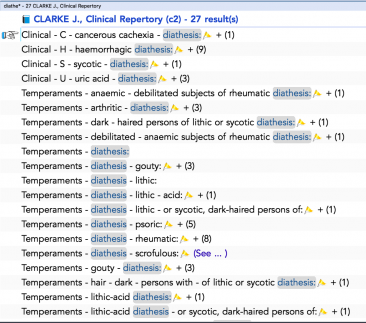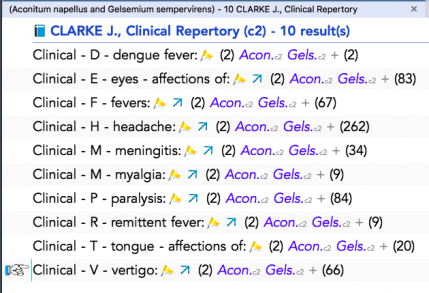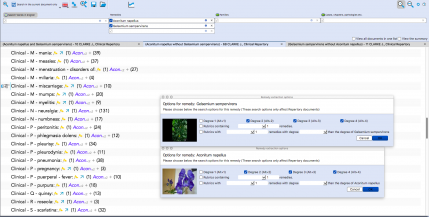Clarke's Clinical Repertory
comprised of 3 chapters:
Clinical, Causation & Temperaments
It can be readily called upon to assist in differentiating the polycrests with lesser known remedies
Clarke's Clinical Repertory is a companion to the comprehensive Dictionary of Practical Materia Medica
The clinical section is arranged alphabetically and has many useful rubrics for conditions such as:
Appendicitis, Adenitis, Blepharitis, Tonsillitis, Toothache, Sciatica, Cirrhosis of the liver, Tetanus, Night-terrors, Nystagmus, Osteosarcoma, Paraplegia, Pleurisy, Rheumatism, Colic, Pancreatic diabetes, Gastric fever, Rhinitis, Anaemia, Arthritis, Enuresis, Haemoptysis, Ichthyosis, Leucocytosis, Paralysis agitans, Psoriasis, Scoliosis, Arterio-sclerosis... and much more
The main use of Clarke's Clinical Repertory is to compare lesser known remedies with the polycrests following a conventional repertorisation
- For example, one can compare similar clinical rubrics from Synthesis with those found in Clarke to help provide some nuance to a repertorisation that would otherwise contain over 100 remedies. This technique is particularly useful when the case lacks defining characteristics and there is not so much to go on other than knowing the nature of the clinical condition.
- It is also helpful when using the clinical condition as an entry point into studying Keynotes or Materia Medica rather than making a full classical repertorisation.
- In the screenshot below, we compare the following rubrics relating to sickness during pregnancy, using Clarke to highlight particular remedies from the bigger rubrics found in Synthesis.

- Smaller remedies are highlighted, such as Castoreum, Cerium oxalicum, Lobelia inflata and Theridion.
- These would otherwise be easy to miss owing to their lack of representation in the bigger repertories and their low ranking in the two large rubrics taken here from Synthesis.
Clarke's Clinical Repertory can be used is in combination with a modern repertory such as Sherr's Q Repertory
- The rubrics from Q Rep can cover the broad psychological themes of the case, whilst Clarke's Clinical Repertory can be employed to highlight the chief complaint.
- In this case, leucorrhea and absence of menses are highlighted and combined with the themes of the case, bringing forward Lac defloratum, Psorinum Lyssinum, Tuberculinum and Chenopodium anthelminticum.


